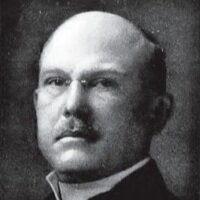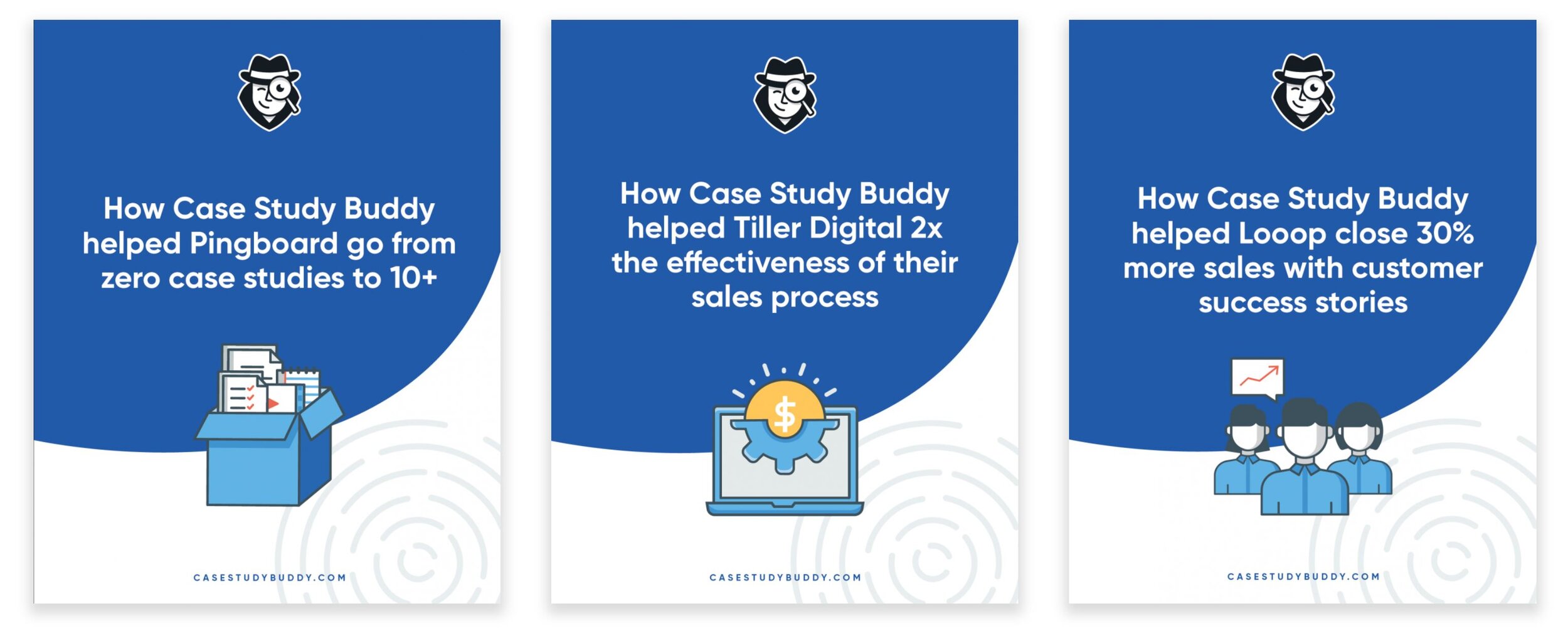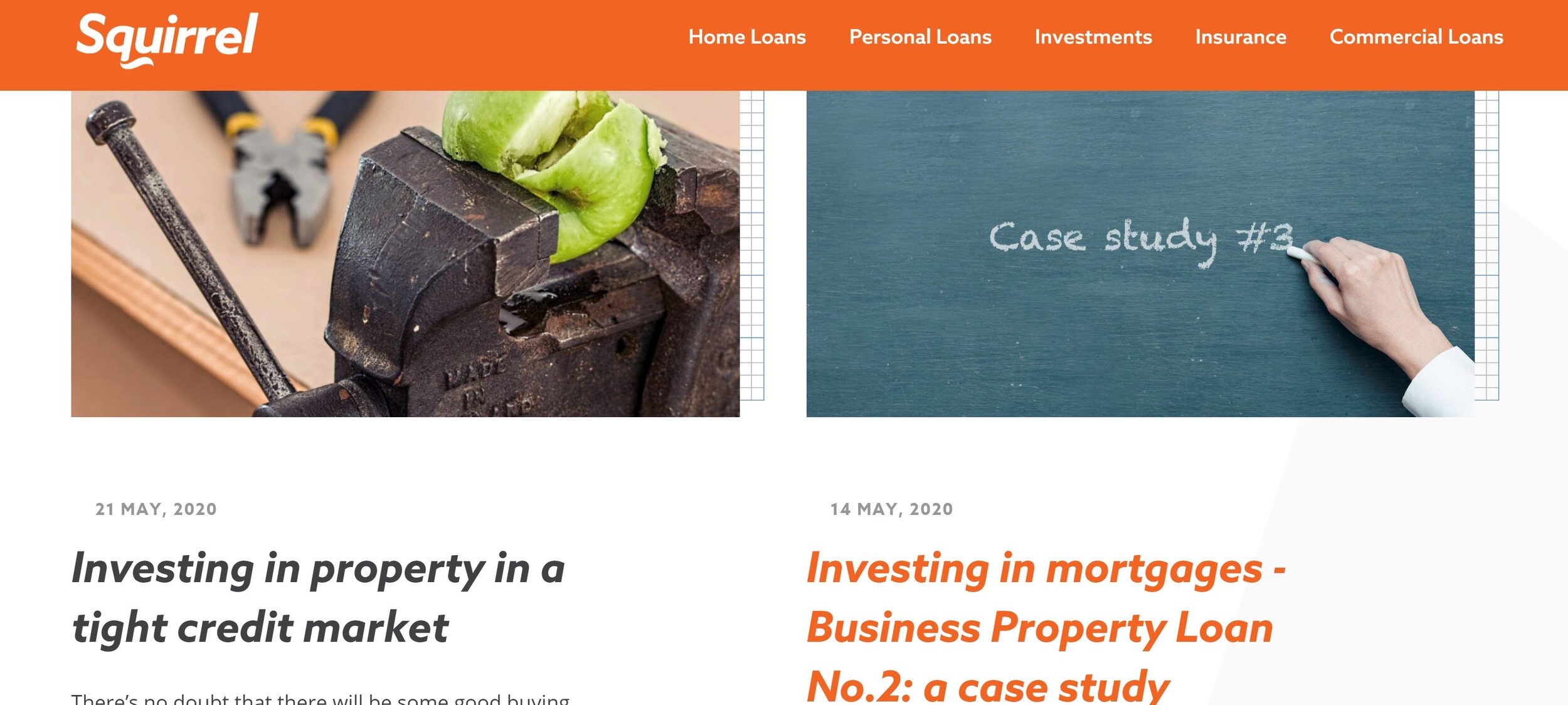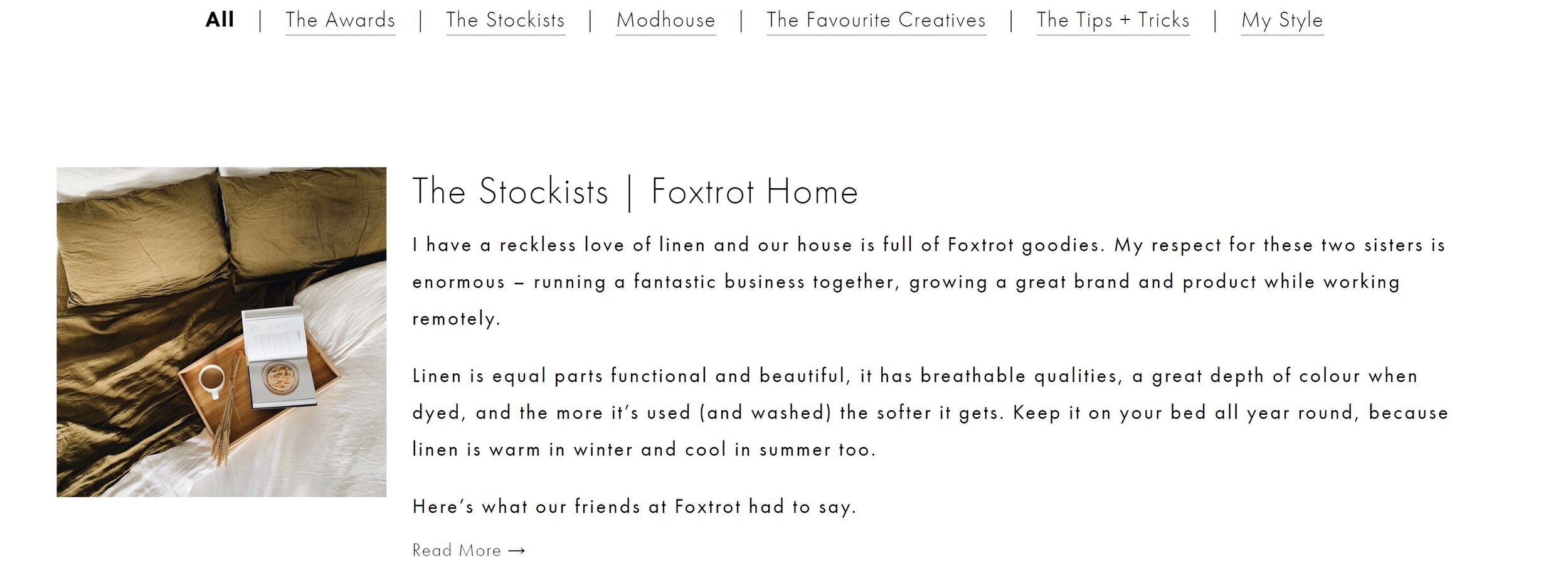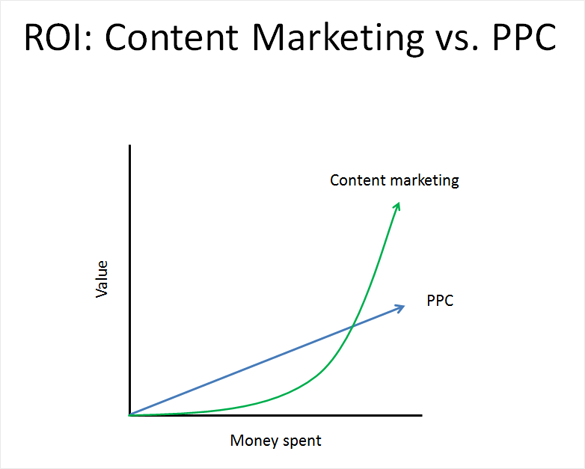How to create a content strategy that attracts, nurtures, and converts
Hands up if you’re tired of the constant new business hustle?
It’s the worst isn’t it?
Who hasn’t looked at their new business pipeline and felt that horrid sinking sensation in their guts? Even if you’re having a great quarter, there’s always that three-month precipice, with its evil little red numbers winking at you. Ahoy. Disaster ahead. Panic now.
Wouldn’t it be lovely to not have to cold call anymore?
Wouldn’t it be great to skip those painful networking events? (I’m a pervert who quite likes networking events, but I’m weird like that).
How would it feel to have a content machine that attracts your ideal clients?
Even better if it captures their email address, so you can nurture them with more great content and convert them with your cheeky deals.
Pretty freaking amazing. Right?
You can create that for your business. And today I’m going to show you how.
It’s going to be a windy old journey. We’ll meet a couple of American advertising legends, a whole heap of acronyms, and get to grips with the purpose of different types of content.
You’ll come out of this with a plan for your very own content strategy to attract, nurture and convert your ideal customers.
Onwards friend. Let’s go get you the content marketing strategy of your dreams.
Chapter 1. In which your correspondent encounters the customer journey
I’m an auto-didact marketer. I picked up my moves from working with smart people, reading like a hungry piranha with worms, and a whole lot of trial and error.
As a result, every so often I come across fun gaps in my knowledge.
Thus, it was with the concept of the customer journey.
Apparently when you study marketing, this helpful little gem gets covered in marketing 101.
Ah well …
About five years ago, I was working on a content strategy for a website promoting a tourist destination.
My colleague sent me a link to a Google article on the stages of travel planning. Google had researched how people plan holidays, and their hypothesis was that travellers move through five stages:
Dream. They start out dreaming of their next trip.
Plan. They consider their options and gather information.
Book. They decide on a destination and book tickets.
Experience. Finally, their holiday rolls around and off they trot to experience their destination.
Share. They have a mighty fine time and share a bunch of #livingthedream selfies on social. This inspires their mates to check out the destination for their next vacay.
In each of these five stages the traveller is consuming different media and seeking different information. A smart destination constructs their content strategy to meet travellers’ needs at all stages of this decision-making journey.
So, this was an exciting moment for me. My inner marketing nerd got a little stiffy. And rightly so, because understanding travellers’ motivations and frustrations at each of those stages, meant I could create better content to meet their needs.
Once upon a time there was a keen young ad hotshot called Eugene.
“Building a little city of desire”
A few months later I was sniffing around, down some digital rabbit hole, when I came across a reference to Eugene Schwartz, and his five levels of customer awareness.
Ping went my internal pattern recognition software.
Eugene Schwartz was a legendary copywriter. A mighty groover of the golden age of print advertising in the 50s and 60s, he was one class act. He poured his earnings into his collection of contemporary art, and gifted hundreds of works to public galleries, saying: “Collecting is the only socially commendable form of greed.”
When he wasn’t writing killer print adverts, and collecting art, he was cranking out 10 books on advertising. He only worked three hours and twenty minutes each day, and was an early pioneer of time batching.
Today he’s best known for his 1966 book Breakthrough Advertising in which he identified five stages of customer awareness.
Completely Unaware: Your prospect has no knowledge of anything except, perhaps, her own identity or opinion.
Problem-Aware: Your prospect senses she has a problem but doesn’t know there’s a solution.
Solution-Aware: Your prospect knows the result she wants, but not that your product provides it.
Product-Aware: Your prospect knows what you sell but isn’t sure it’s right for her.
The Most Aware: Your prospect knows your product, and only needs to know “the deal.”
Eugene was fanatical about customer research. He was infamous for grilling taxi drivers whenever he got a cab, because he believed they had fantastic market insights. He valued research, not only because it helped him understand the customer purchase journey, but also because it allowed him to capture their language.
He wrote: “There is your audience. There is the language. There are the words that they use.”
And he also said: “You do not write copy, you assemble it … you are putting the building blocks together … you are building a little city of desire for your person to come and live in.”
Class act I tell you.
Reading Eugene’s work was a pivotal moment for me. Here was this advertising guru from the 50s crystallising concepts that I intuitively knew and used but had not articulated with one iota of his panache or clarity.
I have no idea how I made it 15 years into my career in marketing, and five years into my career as a copywriter without coming across Eugene.
But I’ve made up for lost time.
Because I now use his five stages of customer awareness as the basis of every content strategy and every website I plan and write. And they’re much better for it.
Thanks Eugene. I wish you were still around so I could shout you a martini.
Eugene asks tremendously ambitious men the important question in life in one of his print adverts
Selling starts with knowing your customers
First you need to know your market niche. Who do you serve? Because it ain’t everyone.
Then you need to know why your customers buy from you, and how that buying process rolls.
If you don’t know why your customers buy your services, or the journey they go through to acquire them, you’re leaving money on the table.
Put it another way.
Selling without customer insight is accidental selling.
Imagine how much more you could sell if you knew what motivated your customers to buy?
Every business, no matter how small, will benefit from investing in customer research. And the beautiful thing is that you don’t have to spend a penny to research your customers. You simply have to be prepared to invest time and effort into getting to know them.
Once you know your customers’ pain and fears and frustrations and desires, then you’re in a place to sell to them.
But before you can sell, you have to get their attention.
And that’s where the customer journey comes in.
St. Elmo Lewis aka AIDA dude
Marketers’ old mate AIDA back when she was AIDC
The customer journey from AIDA to TOFU, MOFU & BOFU
The customer journey model was (probably) pioneered in 1898 by a chap called Elias St. Elmo Lewis. Elias defined the buying journey in four stages: “attract Attention, maintain Interest, create Desire, get Action,” which coined the acronym: AIDA.
There’s tension between this early model and the stages of customer awareness evolved by Eugene Schwartz in the 60s.
Elias encouraged salespeople to create desire to get action.
Eugene believed “the greatest mistake marketers make is trying to create demand”.
Instead, your goal is to meet your potential customer where they’re at in their thought process. “Not to create mass desire — but to channel and direct it”.
Remember Eugene because he’s on the money.
Over the years AIDA morphed into a marketing concept called the sales funnel.
A sales funnel shows the stages a prospect moves through, from becoming aware of your business to becoming your customer and advocate.
This journey is visualised like a funnel because at every stage fewer people progress to the next step. 15,000 prospects are whittled down to 150 customers.
There are many marketing funnels out there. Hubspot’s four stage Attract, Convert, Close, Delight. Or Moz’s five stage acronym laden lovely with its top of the funnel (TOFU), middle (MOFU) and bottom (BOFU).
But all marketing funnels have a common purpose. They all exist to help businesses attract strangers and nurture them until they become evangelical customers.
Mobile disrupts everything (again)
Funnels are real nice. They’re orderly. They’re helpful. They scratch that nerdy part of our brain that likes systems and processes.
But the little supercomputer we all carry around in our pockets, has totes poked the funnel.
Instead of moving in an orderly fashion from completely unaware to most aware, today’s prospect can be a self-proclaimed expert in minutes.
In 2019, Google, making with the handy research again, identified three characteristics of the new generation of mobile shoppers:
Well-advised consumer – Buyers want to make the right decisions, no matter how small, and they’re using their smartphones to get informed.
Right-here consumer – Buyers expect mobile experiences, including shopping, to tailor to their physical location.
Right-now consumer – Buyers want purchasing power no matter the time or place.
What this means is that your prospective customer can hop all over the show in terms of their awareness and intent.
They may follow all the steps beautifully, only to backpedal at the last moment when they find your competitor meets their needs better. A well-informed prospect may skip multiple stages and convert faster. Or a cautious buyer may spin out the research stage indefinitely, paralysed by choice and the volume of information.
When I specialised in destination marketing a few years back, we were already seeing the disruptive effects of mobile on travel planners’ customer journey.
When our parents planned holidays, they booked in advance, had an itinerary, and shared their holiday snaps over tea with the neighbours. Slideshows were hot. Now people book their air ticket. Maybe their first night’s accommodation. Then they plan and book everything else from their mobile, in their destination, while sharing on social.
Mobile has made everything more unpredicatable.
But the key stages of awareness takeaway for consultants and freelancers remains constant.
To attract your ideal clients, create quality content that meets their needs at all stages of awareness.
To attract a constant stream of leads to your business, create quality content that meets your customers’ needs at all stages of awareness.
Disruptive mobile micro-moments of travel planning identified by Google.
How does this inform your website content and digital marketing?
When you write content for your website, or post on social media, or send an e-newsletter what’s your goal?
When I ask businesses this question, I often get one of three answers:
Promote my business.
Sell my widget.
????
All three answers are wrong.
Well number three isn’t wrong. But if you’re number three you’re not ready to market.
I’m not an absolutist kinda woman, so I rarely say never or always. But here I’m going to make an exception. Whatever marketing activity you’re undertaking, your goal is always to meet your customers where they are at.
Remember Eugene.
Your prospect starts out unaware of you and unaware that she needs what you offer.
If you get her attention, educate her about your solution, and build trust, she may end up buying what you have to offer.
To do that you create content that’s relevant, empathetic, useful, and generous.
You meet her where she is and earn the right to sell to her.
Related to your customer journey is the Marketing Rule of 7. This states that your prospect needs to hear your messages seven times before they’re ready to buy. With content proliferation and people’s growing sophistication and cynicism, the Rule of 7 is now more like the Rule of 10-13 content touchpoints.
You can accelerate that journey by creating quality content that demonstrates your expertise and your empathy for your customers’ problems. This creates trust and reduces the amount of proof potential clients need to make the decision to work with you.
Set your content strategy to serve not sell
It’s important to set out on this journey with an authentic desire to serve the people you help.
Content marketing is a long game. You’ve got to be in it for the right reasons.
I don't create resources like this to sell my services.
It’s about helping consultants and freelancers like you improve your content, because being a solopreneur ain’t an easy row to hoe.
70% of all business in NZ are sole traders. That’s 353,000 businesses. But what with having to be everything from admin wrangler to marketing guru, it’s no surprise we sometimes struggle with growing our businesses, managing time, and staying motivated.
As a result of these challenges, sole traders are more likely to fail than larger businesses. According to MBIE, 58% of sole traders established in 2010 ceased to exist by 2015. Research in UK and Australia also shows 60% of sole traders quit within 5 years.
Being an NZ consultant or freelancer can be hard and lonely.
That’s why my mission is to help consultants and freelancers who hate selling, use content to grow their business instead.
And hey, if you find these articles useful, you might think of me if you do need some help with copy, or refer your mate who needs some web copy written my way. But that’s a bonus.
In summary, be clear how you’re going to use content to add value to your community, before you start investing time and energy in creation.
So what content should you be creating?
A customer focused content strategy gently guides your potential customers through the stages of awareness. On this journey you inspire curiousity, equip them with useful knowledge, and share social proof to build trust.
The best type of content to create for each stage is informed by your customer’s level of awareness. Ask yourself, given how much this person knows about me and my business, what sort of content are they looking for right now?
Research into B2B buyers shows that they favour blogs and articles in the initial stages, product descriptions in the middle stages, and reviews in the closing stages. In the 2018 Content Preferences Survey Report 79% of B2B buyers read case studies before a purchase, and 71% said they consumed blog content and white papers.
There are as many customer journey content models out there as there are content marketers. This is my version. It’s liberally inspired by Moz, Hubspot, and the late great Eugene. Feel free to use it, abuse it, customise it, and make it your own.
Different channels allow you to communicate with people in different stages of awareness. Let’s take a detailed look at each of the stages above.
1. Attract the right kinda strangers
To attract the right kinda clients into your life you need to know three things.
Who you want to work with.
Where they hang out online, and in real life.
What content’s going to grab their attention.
Know who your ideal client is
First (and this is going to sound glaringly obvious) you need to know who your ideal clients are. Simple advice maybe but hella underused.
It faileth not to gob smack me the number of conversations I have with professional service providers, that go like this …
Me: “So, tell me about your ideal client then.”
Them: “Weeeeeelll, we work with everybody really.”
Me: “AAAAAAAAAAAAAAAARRRRRGHHHHHHH!!!!!!”
You need (you really, really need) to be able to define your market niche.
You can niche by:
Industry.
Need for a specific service.
State of mind.
Stage of life.
Any combo of the above.
TBH, I don’t care how you niche. But do it.
The main reason you need to niche is simple.
Relevance.
Think about it. When you’re looking for a consultant to work with, you want someone who knows how to fix the problem you’re experiencing. You don’t want a generalist. You want an expert who can show they’ve delivered the goods for people like you.
Want to know more about how to niche? Head over here.
GO FISHING IN THE RIGHT POND
Niching also helps you focus your marketing energy and dollars in the right place.
Only multinational megacorporates have the resource to market to everyone. Those of us with more modest marketing firepower need to be a bit more focused in our efforts.
You attract your ideal clients by showing up and sharing content in places they’re already hanging out. This could be:
Social media channels and groups your ideal clients like to use.
Websites used by your ideal clients.
Publications read by your ideal clients.
Events attended by your ideal clients.
When you go fishing outside your bubble, use watering holes your ideal client frequents. You want qualified leads, not any old leads. Know your niche. Know where they go.
And if you like wild salmon, don’t go fishing in a muddy creek that only has eels.
CREATE CONTENT THAT’s RELEVANT TO THEIR NEEDS
How do you make sure your milkshake brings the right kinda strangers to your yard?
First, you need to know what kinda strangers you want to be your friend. Once you know your ideal client, it’s a lot easier to work out what content you need to create to attract them.
Remember old mate Eugene Schwartz and his stages of awareness?
He’d categorise strangers as unaware or problem aware.
If someone is unaware they don’t know you, or what you do, and they don’t know they have a problem. But they do know who they are.
If someone is problem aware they don’t know you, or what you do. But they do know who they are and they know they have a problem.
You attract people who’ve the potential to be your ideal client by creating content that speaks directly to them, and talks about the problems you can help them solve.
With this content, you want to:
Answer FAQs from your ideal clients.
Show people how to solve the problems you fix for free.
Share stories about your ideal clients and problems you’ve fixed for them.
Don’t sell with this content. It’s too soon and people will run for the hills.
Your job is to create:
Recognition. This is for me
Interest. I have this problem. I always wondered that.
Trust. This person knows their shit. I’m keen to hear more.
Auckland stylist Cait Taylor shows off the moves that attract over 20,000 monthly visitors to her blog.
2. Enroll them in your community
Once you’ve attracted attention from people who’ve the potential to be your ideal client, you want them to stick around and get to know you better.
Encourage these folks to join your community, so you can keep on sharing content with them and build a trusting relationship.
You do this by consistently creating helpful content and inviting them to join your community with irresistible opportunities to get their hands on even juicier tools.
Joining your community can mean:
Signing up for your e-newsletter.
Following you on social media.
Joining your Facebook group.
Attending a webinar.
Content that encourages people to join your community includes:
Consistently useful content that helps people solve the problems you fix for free.
Sneak content previews from closed communities like Facebook groups.
Blog content upgrades.
Free downloads. These are tools that help potential clients solve a problem for free. They include how to guides, research reports, business templates, quizzes, and assessments.
Free coaching (webinars or automated courses).
Word of advice. Gate content sparingly.
The market’s oversaturated with lead magnets and they don’t always deliver quality leads.
If you’ve invested in creating a great resource, get it in front of as many folks as you can.
If you keep showing up, creating useful content, and offering people irresistible opportunities to get their hands on even juicier tools, people will want more and they will join your community. Have faith and do the work.
Free lead magnets from visual storyteller Beth Kirby. Beth uses these to enroll people in her community.
3. Convert them to customers
Once a potential client has been in your community for a while, offer them the opportunity to work with you.
Convince them with proof you can solve their problem.
Then convert them into customers.
Convince with:
Content that goes deeper on your process and your expertise.
Case studies
Testimonials.
Convert with:
Free consultations.
Offers of services, courses, or other products.
Deals and discounts (if this is your thing).
B2B prospects may require extended nurturing in this phase for several reasons:
B2B purchases can be more expensive and require more due diligence.
B2B purchase cycles can be longer.
If you’re a service provider, you must overcome inertia and the pain of exiting an existing business relationship with a similar service provider. This can take time.
B2B purchases carry a significant opportunity cost. If they sign up with you, change their processes, train their staff, and you turn out to be a mistake, that’s a scary thought.
Entry level offers, like low budget webinars and courses, books and digital assets, can be a low-risk way for a potential client to try before they invest in your high-ticket services.
case studies on case studies by Case Study Buddy. Meta or wot.
4. Delight them so they become your ambassadors
Once someone has joined your inner circle of clients, your goal is to inspire repeat custom and create loyal advocates who give testimonials and refer new business your way.
You do this by doing freaking epic work.
But you also do this by paying attention to the experience of working with you and making that experience as enjoyable as you can.
Consider:
Your onboarding process. Have you a client welcome pack?
Customer support. How do client get help if they need it?
Special perks. Do they get special deals because they’re your customer?
Tokens of appreciation. What do you give them to say thanks?
Storytelling. Are you making your clients into heroes?
Personal contact. Schedule regular contact to show that they’re front of mind, even when you’re not working on a project with them.
Project reviews. Give your clients a chance to give feedback after each project. This helps gather testimonials.
Surveys and customer interviews. Are you giving your clients a chance to give you anonymous feedback? Or the opportunity to sit down with an impartial third party?
Businesses often put enormous effort into marketing to customers in the awareness stage. And little to no effort into delighting and retaining their existing customers.
Obviously, this is demented.
Not only does it cost less to get a repeat purchase from a happy client than it does to win a new client. But also, happy clients are a gargantuan business development asset.
To this day, nothing beats word of mouth.
Designworks client gift. Hand pressed honey from their rooftop hive. packaging by them. Natch.
Ogilvy & Mather’s one year staff gift. Appreciating their team here, but worth putting this much welly into appreciating our clients.
Examples of New Zealand businesses killing it with customer centric content marketing
I dunno about you, but I get a teensy little bit antsy reading articles about blogging strategies and lead magnets by SAAS companies with massive marketing teams.
They know their stuff. They really do.
But there’s a significant gap between their resource and that of most New Zealand businesses. Their strategies and examples aren’t always replicable for my clients, or for me.
So, I thought it might be more relatable to share some examples of New Zealand SMEs slogging their way to success with customer centric content strategy. Many are one-woman bands, so if they can make time to do it, we can too.
One hella irresistable lead magnet here from the smart people at Consult Recruitment.
Chasing Cait
Caitlin Taylor is a personal stylist. She offers coaching and workshops to help people develop their personal style. She also does one-on-one and virtual styling sessions. And she has a store and a range of e-books for style lovers on a budget.
But people don’t have to hand over a penny to be inspired by Cait.
Her style blog helps you create confidence through style. She has been blogging since 2010, and now receives approx. 20,000 unique website visitors a month. This content driven strategy has helped her create a viable niche business.
Chasing Cait’s lead magnet. That’s what I’m talking about.
Squirrel
Mortgage brokers Squirrel have been around for 10 years. And they’ve published a blog once a week, every week since their beginning. They also have 20,000 email subscribers.
They share down-to-earth financial advice for Kiwis. Their friendly tone and cheeky glint of humour don’t hurt either.
Once thing you can be damn sure of is that a finance company aren’t creating content for shits and giggles. Those 495 blog posts and weekly e-newsletters will be delivering $$$.
They haven’t got a huge marketing team, so shout out to Squirrel for their commitment to content. It ain’t easy showing up and being helpful for ten years on the trot.
Squirrel get their blog on. One blog a week for ten years. That’s content commitment.
Stylemaker
Nikki McNamara established interior design studio Stylemaker in 2015. In 2019, her blog won the Tom Dixon – Best Interior Designer Blog (International) category in the hotly coveted global Interior Blog Awards. This speaks volumes about Nikki’s commitment to quality content.
Nikki doubles down on visual inspiration with her Pinterest presence, where she has 6,500 monthly viewers, and her Instagram community, where she has a modest but highly engaged following of a few thousand. Her social media is a pitch-perfect example of meeting her target market where they hang online.
A woman with a reckless love of linen. A woman after my own heart. The Stylemaker blog.
Nicola Galloway
You can find cook, journalist and cookbook author Nicola Galloway at Homegrown Kitchen. With the fragmentation of journalism and the rise of the freelancer, journalists with their own substantial social following (20,000+) are an attractive proposition, because they bring their own people to the party.
Nicola publishes recipes on the regular, runs cooking workshops, and sends out fortnightly e-newsletters. Her commitment to quality content saw her take out the best NZ Food website in the 2019 Foodies, NZ Food Media Awards.
Homegrown Kitchen, Nicola Galloway’s awardwinning content marketing hub.
Lynnaire Johnston
Lynnaire Johnston helps people use LinkedIn to grow their business. A LinkedIn ninja herself, Lynnaire’s also a prolific publisher of tips and blog posts that give handy actionable hints.
She’s so generous with her knowledge, that she was named New Zealand’s #1 LinkedIn Expert by the Social Media Marketing Institute of Australia.
Lynnaire Johnston’s LinkedIn advice is a treasure chest of useful insights
Consult Recruitment
Consult Recruitment started blogging at the beginning of 2014.
Two years later managing director Angela Cameron was quoted in the NZ Herald saying the company had 6,000 blog subscribers and had seen a 400% increase in traffic to its site, with 70% of that new traffic coming through the blog.
She closed by saying, "I don't think it's a coincidence that during this time our revenue has increased by 265%.”
The Consult Recruitment blog. Nice sign up team . No messing with those data capture goals.
This is a long game with serious rewards
If all this sounds like a lot of hard work, you’d be right.
But here are three reasons why you should commit to creating a customer focused content strategy, and regular content marketing.
1.Businesses expect you to provide content that helps them make their decision
2017 research into 283 C-level executives across B2B industries showed buyers get over 70% of the way through their buying journey before they reach out to your business. If you don’t provide the information they want, they won’t ask. They’ll go somewhere else.
2. Content is a solid long-term investment
There’s no such thing as free marketing. Let’s knock that myth on the head. Every marketing activity carries a cost, whether that’s time or money.
Nor can you do all the marketing things.
If you’re reading this, you’re probably a consultant, a freelancer, or a creative service provider. You own your business, or you head up marketing for an SME. You’re time poor and cash poor. Your biggest marketing question is how do you invest your time most wisely?
Investing in content marketing is a smart long-term investment. When you pay to play, as soon as that money tap turns off, you’re outta juice. Content continues to deliver.
So, invest your marketing time wisely. Time is our most precious thing.
3. Content growth goes exponential
Content marketing is a three-year commitment before you start to see serious results.
But those results are worth waiting and working for.
Single Grain is a full-service digital marketing agency in LA.
In 2014 they were about to go under. Eric Siu bought the business for $2.00. Things were dire.
Eric went all in on content marketing. Today Single Grain makes over 7 figures and has a waiting list of clients wanting to work with them.
One of their content marketing channels is a podcast called Growth Everywhere:
Year 1: 9 downloads per episode
Year 2: 30 downloads per episode
Year 3: 80,000 downloads per episode
That content marketing effort sure stacks up. But you have got to stick with it. Most people give up just when they’re starting to get traction.
Have zero expectations for year 1*. Modest expectations for year 2. And hang in there for the pay off in year 3.
*That said, this website is a month old. I’ve published a grand total of four blog posts. One article brought in two new clients. That’s either beginner’s luck, or the power of a considered content strategy.
And finally …
Nope. That’s it. I’m all worded out.
I hope this was helpful. As I mentioned, way back at the beginning of this meandering monster of an article, I was late to the stages of customer awareness party.
But when I got there, hoo boy … did I slap my fluro legwarmers on and get on the dancefloor. Understanding how all the marketing pieces fit together has been nothing short of epiphanic.
If you found this useful, you can join my v prestigious email list. Theoretically I send emails weekly. But in practice, if I manage monthly, I slap myself on the back and take myself out for a beer. So, join me for virtual mind beer same time next week.




